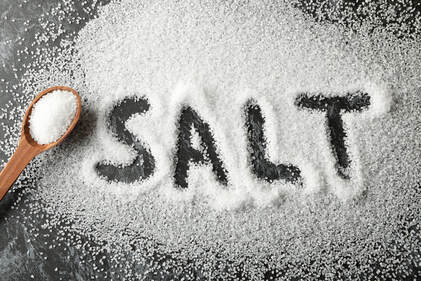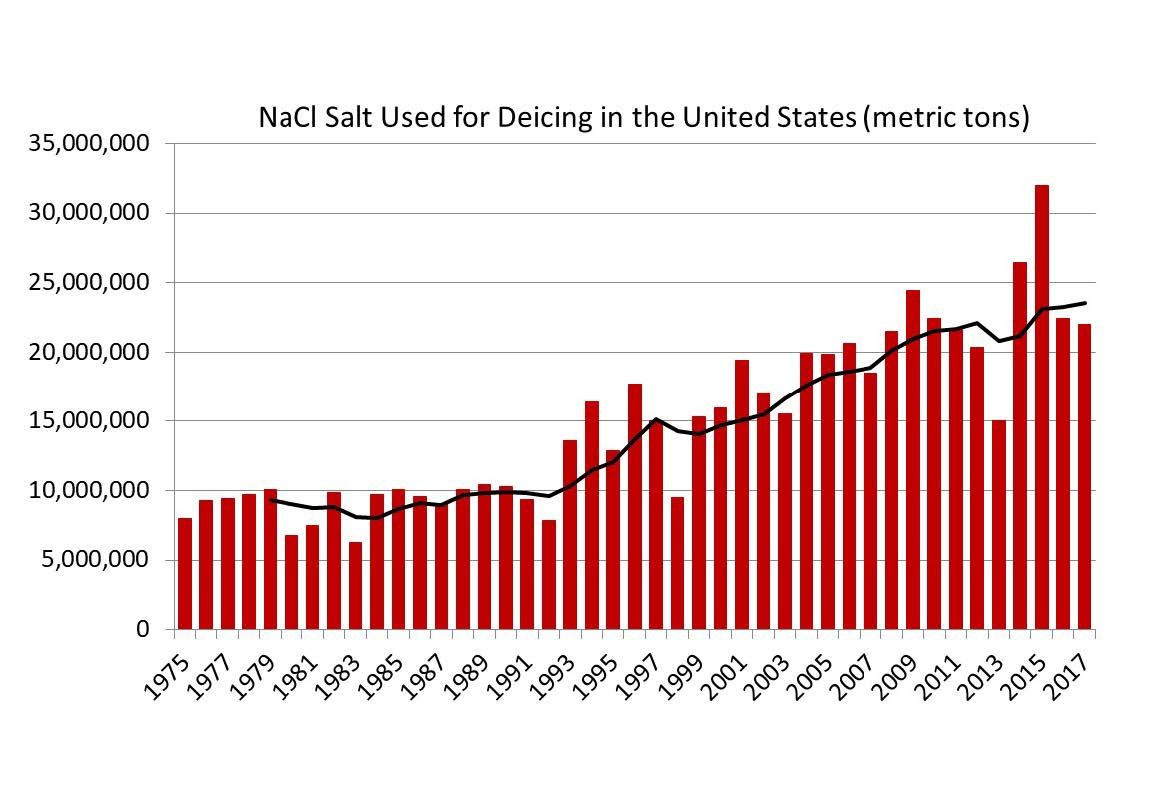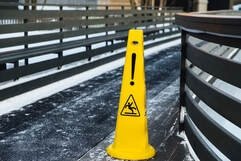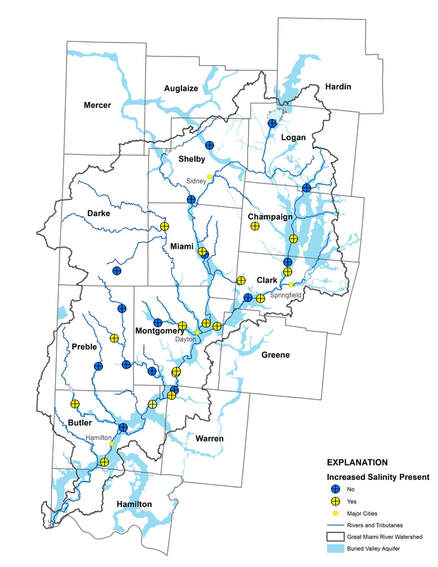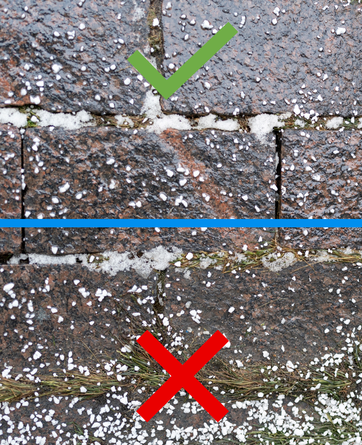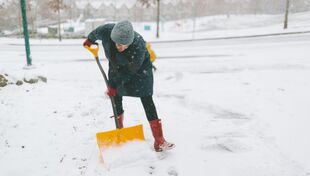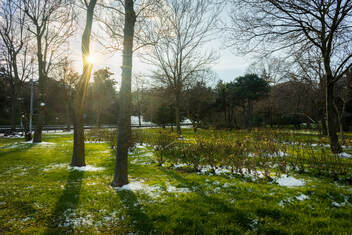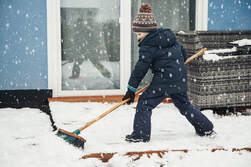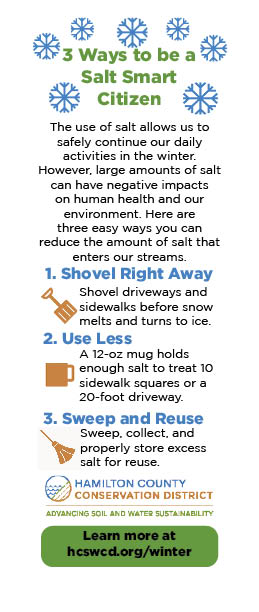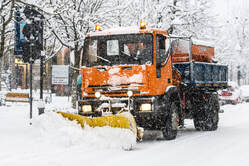Watch our Winter 'Seasonal Stormwater Series' video to learn more!
Benefits of using Rock Salt - safety!
Problems with too much Salt
|
|
Best Practices for Residents, Businesses, and Property Managers
|
1. SHOVEL EARLY - Shoveling your sidewalk and driveway early is the easiest, most cost effective way to reduce the need for salt use. This prevents daytime snowmelt from re-freezing into hazard ice.
|
2. USE LESS - One of the biggest, and most expensive, mistakes homeowners make is overapplying. Read the product label for recommended amounts - a good rule of thumb is that a 12 oz. coffee mug is enough to treat 10 sidewalk squares, or a 20-foot driveway. Using less also saves money!
3. SWEEP & REUSE - Another great money-saving tip, sweep up and collect remaining undissolved salt once the ice has melted. This can be reused the next time around.
|
Salt Alternatives
If you want to avoid using salt altogether, here are some good options to consider.
- Ice Melt (MgCl) - Readily available, magnesium chloride ice melt is better for the environment and for pets, and remains effective to -13°F. It typically requires a higher amount to be effective than rock salt, meaning it can be more expensive if needed in large quantities.
- Ice Melt (CaCl) - Readily available calcium chloride ice melt is the safest option of all salts and ice melts (for pets and environment). Is it effective to the lowest temperature (-25°F!), but it is also the most expensive.
The 'sodium' portion of salts causes the most problems, but elevated 'chloride' levels are also a problem in our waterways. Here are some options to consider that are free of both elements.
- Coffee grounds - Warm up with a cup of joe, then sprinkle the grounds on the ice outside.
- Alfalfa meal - Used on its own or mixed with coffee grounds, alfalfa meal is an effective natural alternative.
- Sand - Sand is very inexpensive, and works by creating traction rather than melting the ice. It can even be mixed with salt to reduce the amount of salt needed. Sand can cause other water quality issues, and should be swept up after use.
- Birdseed - Another option that works by creating traction, and not melting the ice. If you like to feed the birds and squirrels anyway, this is a great option for you. You'll have to replace it once it gets eaten if the ice is not gone, but at least the clean up isn't your job!
Resources
|
For Municipalities
| ||||||||
|
Office Hours: Monday to Friday 8 am to 4 pm
1325 East Kemper Road, Suite 115 Cincinnati, OH 45246 Phone: (513) 772-7645 The Hamilton County Soil & Water Conservation District is a legal subdivision of the State of Ohio responsible for the conservation of natural resources within Hamilton County, Ohio. We have a special emphasis on soil and water with a focus on assisting landowners in planning and applying conservation practices on the land. HCSWCD is dedicated to the sustainable use of our natural resources and to encouraging positive behavioral changes that produce a higher quality of life for our citizens. The District assists all Hamilton County residents, schools and jurisdictions through our free services and dynamic partnerships that continually provide innovative solutions for the challenges of our region.
|
Talk to Us!
|

